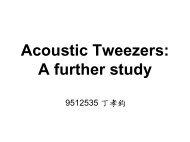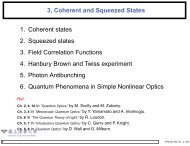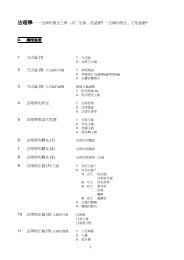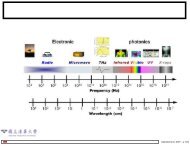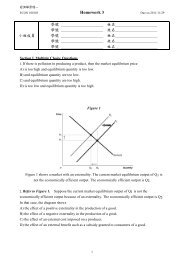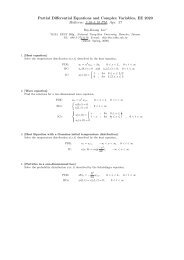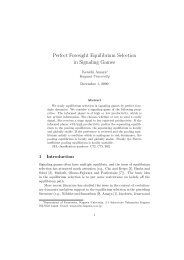Acceleration, Shock and Vibration Sensors
Acceleration, Shock and Vibration Sensors
Acceleration, Shock and Vibration Sensors
Create successful ePaper yourself
Turn your PDF publications into a flip-book with our unique Google optimized e-Paper software.
Chapter 5<br />
achieve true 0 Hz (DC) responses. These sensors may contain built-in signal conditioning<br />
electronics <strong>and</strong> a voltage regulator, allowing them to be powered from a 5–30<br />
VDC source. Some manufacturers offer an offset adjustment, which serves to null any<br />
DC voltage offset inherent to the sensor. Capacitive accelerometers are generally able<br />
to measure smaller acceleration levels.<br />
The most basic criteria used to narrow the search, once the functionality category or<br />
response type of accelerometer has been decided, includes: sensitivity, amplitude,<br />
frequency range <strong>and</strong> temperature range. Sensitivity for shock <strong>and</strong> vibration accelerometers<br />
is usually specified in millivolts per g (mV/g) or picocoulombs per g (pC/g).<br />
This sensitivity specification is inversely proportional to the maximum amplitude that<br />
can be measured (g peak range.) Thus, more sensitive sensors will have lower maximum<br />
measurable peak amplitude ranges. The minimum <strong>and</strong> maximum frequency<br />
range that is going to be measured will also provide valuable information required<br />
for the selection process. Another important factor for accelerometer selection is the<br />
temperature range. Consideration should be given not only to the temperatures that<br />
the sensor will be exposed to, but also the temperature that the accelerometer will be<br />
stored at. High temperature special designs are available for applications that require<br />
that specification.<br />
Every sensor has inherent characteristics, which cause noise. The broadb<strong>and</strong> resolution<br />
is the minimal amount of amplitude required for a signal to be detected over the<br />
specified b<strong>and</strong>. If you are looking at measuring extremely low amplitude, as in seismic<br />
applications, spectral noise at low frequency may be more relevant.<br />
Physical characteristics can be very important in certain applications. Consideration<br />
should be given to the size <strong>and</strong> weight of the accelerometer. It is undesirable<br />
to place a large or heavy accelerometer on a small or lightweight structure. This is<br />
called “mass loading.” Mass loading will affect the accuracy of the results <strong>and</strong> skew<br />
the data. The area that is available for the accelerometer installation may dictate the<br />
accelerometer selection. There are triaxial accelerometers, which can be utilized to<br />
simultaneously measure acceleration in three orthogonal directions. Older designs<br />
required three separate accelerometers to accomplish the same result, <strong>and</strong> thus add<br />
weight <strong>and</strong> require additional space.<br />
Consideration should be given to the environment that the accelerometer will be<br />
exposed to. Hermetically sealed designs are available for applications that will be<br />
exposed to contaminants, moisture, or excessive humidity levels. Connector alternatives<br />
are available. <strong>Sensors</strong> can come with side connections or top connections to ease<br />
cable routing. Some models offer an integrated cable. <strong>Sensors</strong> with field-repairable<br />
cabling can prove to be very valuable in rough environments.<br />
152






